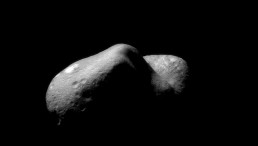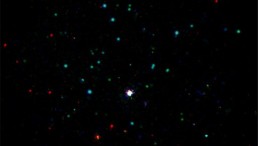The Astronaut Hall of Fame is now four members stronger after NASA's Associate Administrator for the Science Mission Directorate John Grunsfeld and former astronauts Steve Lindsey, Kent Rominger, and M. Rhea Seddon were inducted on Saturday, bringing the total number of Hall of Fame explorers to 91.
The ceremonies were presided over by NASA Administrator Charles Bolden, himself a 2006 inductee, and 2008 hall of famer Bob Cabana, director of NASA's Kennedy Space Center in Florida.
"To John Grunsfeld, Steve Lindsey, Kent Rominger, Rhea Seddon - I offer my deepest congratulations," said Bolden. "You have my deepest respect for all you have achieved in space, for the example you set for others, and the inspiration you have given future generations to take us on a journey to Mars."
Grunsfield was first selected to be an astronaut for NASA in March 1992. Today, he a veteran of five different flights and has logged more than 58 days in space, including 58 hours and 30 minutes of extravehicular activity during eight different spacewalks. Three of his missions focused on repairing and upgrading the Hubble Space Telescope.
Grunsfield went on to serve as deputy director of the Space Telescope Science Institute in Baltimore, managing many of the science programs for both the Hubble Space Telescope and the James Webb Space Telescope, which is scheduled for launch in October 2018. Grunsfield was then selected for his current position at the headquarters for NASA in Washington in 2012.
Lindsey was first selected for NASA's astronaut corps in March 1995. Serving on five different spaceflights, Lindsey logged more than 63 days in space and served on notable missions, including STS-95 alongside former astronaut and U.S. senator John Glenn, STS-121, the second return flight after the loss of Columbia, and STS-133, the final flight of the space shuttle Discovery.
Rominger was selected to be an astronaut in 1992 and is also a five spaceflight veteran. For three of those flights he served as the pilot and two as the commander and he logged more than 67 days in space. Several of his flights were integral to the beginnings of the International Space Station. During the STS-96 mission, in which he served as commander, Rominger oversaw the first docking of a space shuttle to the space station.
Seddon was first selected by NASA in January 1978 and was a part of the first astronaut class that included women and she went on to become an astronaut in August 1979. She logged more than 30 days in space during her three flights. In addition to participating in and conducting medical experiments during her fights, Seddon also developed and implemented a variety of programs for the space shuttle.













![Blue UFO Spotted in Philadelphia; Object Descends in Delaware River [Watch]](https://1721181113.rsc.cdn77.org/data/thumbs/full/53112/258/146/50/40/blue-ufo-spotted-in-philadelphia-object-descends-in-delaware-river-watch.jpeg)
